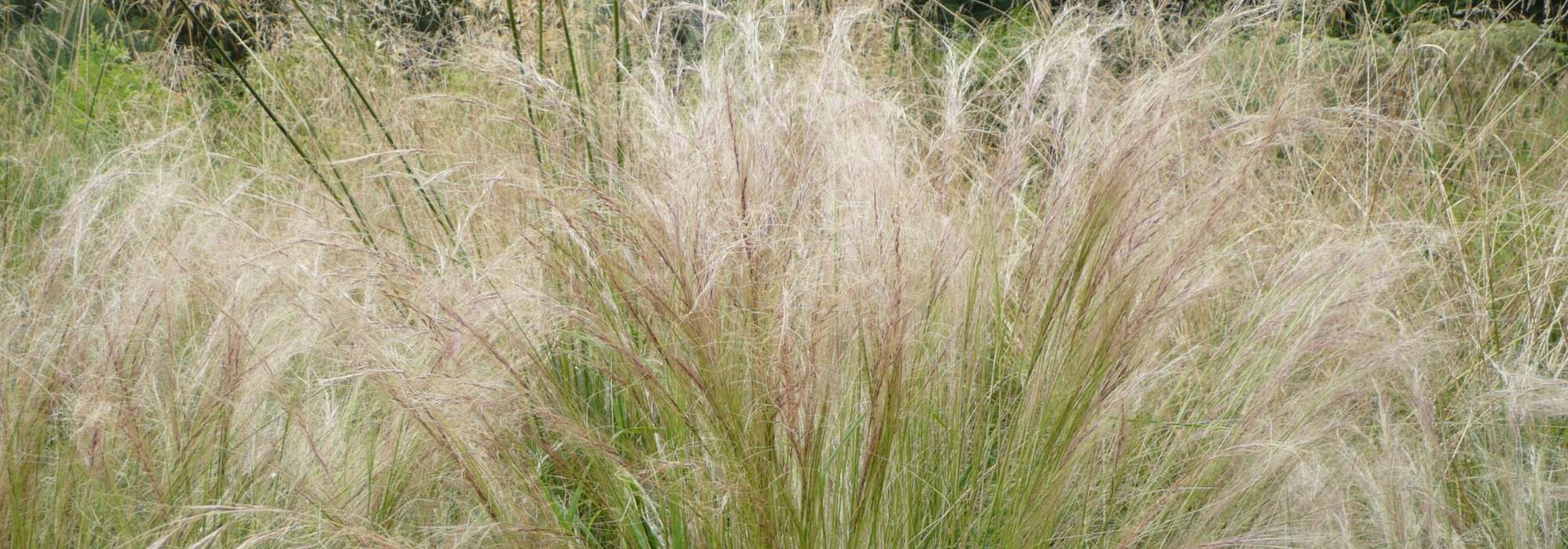
Stipa, Angel's Hair: planting, pruning, maintenance
Contents
Stipa in a nutshell
- It is undoubtedly the most popular of grasses
- With its silky spikes that dance with the wind and light, its flowering is among the most beautiful
- It fears neither wind nor heat and thrives in dry or well-drained soil
- Easy to cultivate, it quickly adorns sunny, dry, windy, and arid areas of the garden
- A stunning appearance in every season, it fits well in all natural or contemporary gardens, in borders, rockeries, and even in pots
A word from our expert
Garden enthusiasts are well acquainted with the Stipa, this grass with silky tufts that undulate at the slightest breeze.
Proudly upright yet remaining flexible and light, it enhances all natural compositions or softens the clean lines of a mineral garden, establishing itself in recent years as a must-have, one of the most beautiful grass flowerings.
Hardy and resilient to harsh conditions, neither too tall nor too short, the Stipa is a perennial plant that thrives in all gardens, from the wildest to the most contemporary.
From Stipa tenuifolia (syn. Stipa tenuissima), better known as “angel hair” or “pony tails” among the Anglo-Saxons, to the giant Stipa gigantea and Stipa capillata with its delicate silver and silky spikelets, all offer a stunning mane throughout the seasons that catches the light under dew or frost.
The Stipa fears neither wind nor heat, tolerates drought, and grows in full sun in dry or well-drained soil.
With its quivering silhouette and authentic wild look, it will provide structure and volume to the windy and arid areas of the garden, in naturalistic masses, dry rockeries, along pathways, and also in pots.
Add depth and poetry to your garden and discover the Stipa, one of the trendiest grasses at the moment.
Description and Botany
Botanical data
- Latin name Stipa
- Family Poaceae
- Common name Stipa, Angel's hair
- Flowering June to November
- Height 0.45 to 2 m
- Exposure Sun, partial shade
- Soil type Dry, well-drained
- Hardiness -5°C to -20°C depending on varieties
The Stipa is a herbaceous perennial plant belonging to the Poaceae family, like many grasses. It also grows in clear underwoods and on rocky slopes in Central America, from Argentina to Mexico, southern Europe, and western Asia.
While the genus comprises around 300 species, the most commonly encountered in our gardens are Stipa tenuifolia (syn. Stipa tenuissima), nicknamed “angel’s hair” for its silky blonde bearded spikes, Stipa pennata with its silver seed spikes, Stipa gigantea, the giant stipa or giant oat that can reach 2 meters in height, Stipa capillata with its thick, tufted base and glaucous green leaves, and Stipa arundinacea with foliage tinged with rust.
Of fairly rapid growth, the stipa stands upright while remaining flexible, with a more or less ample and trailing habit. This rhizomatous grass grows in a dense, compact tuft and vigorous, from 50 cm to 2 m in height depending on the species, bristly to slightly arched, sometimes flaring out in a graceful fountain, forming a spectacular clump.
Evergreen in mild climates or deciduous, the long leaves, measuring 10 to 70 cm, are very fine, linear, arched, usually curled, sometimes flat, undulating at the slightest breeze. Shiny and tough, they are fresh green to dark green or blue-green. The young spring green leaves of Stipa arundinacea stand out by becoming burnt orange in summer and then turning to copper rust in winter.
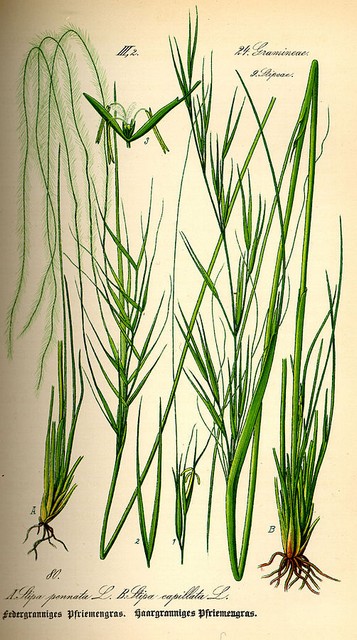
Stipa pennata and Stipa capillata – botanical illustration
From this mass of ribbon-like foliage emerge numerous slender, very sturdy culms, bearing fluffy, narrow panicle inflorescences from May-June to October at their tips, slightly curved towards the ground. Composed of flattened spikelets bearing feathery or silky spurs 10 to 80 cm long, they sway at the slightest breath of air.
While the Stipa gigantea has flowering panicles that droop like those of oats, most stipes evoke an angel’s hair with an unparalleled poetry.
Silver, white tinged with purple, parchment-coloured blonde turning to golden bronze in autumn or dark pink to brown, these bearded spikelets are so fine that they resemble a shimmering cloud from a distance.
During summer, the plumes bear fruit and transform into spectacular seeds extended by long threads resembling silky beards or tow that float in the wind and shimmer under the morning dew and the slightest ray of sunshine. Dispersed by the wind, they reseed wherever they please in nature.
Very graphic, they are highly valued for dried flower arrangements and continue to provide interest in winter when a white frost covers the culms and dried inflorescences.
Easy to grow, hardy for the most part (-10 to -20°C), even tolerating drying winds, salty sea breezes, and showers without flinching, stipes can be planted in most of our regions: some more tender varieties (-5°C) are, however, best reserved for mild climates.
The Stipa requires full sun to develop properly and thrives in poor, dry, light, calcareous, well-drained soil: it fears winter moisture.
Under the slanting light of late summer or under frost, the Stipa always brings a strong presence, beautiful structure, and incomparable lightness to the garden, from the most wild to the most contemporary or urban. It is a must-have for dry gardens.
It can be planted alone or in large masses in large beds and naturalistic meadows, to highlight a path or a border or in a large pot.
 The stipes form a somewhat heterogeneous group: Stipa arundinacea, Stipa capillata, Stipa tenuifolia, Stipa gigantea.
The stipes form a somewhat heterogeneous group: Stipa arundinacea, Stipa capillata, Stipa tenuifolia, Stipa gigantea.
Read also
Grasses: which variety to choose?Main species and varieties
A small number of Stipa species are available for sale, varying in height (from 45 cm for the most well-known Stipa tenuifolia or “Angel’s Hair” to 2 m in height for Stipa gigantea, best reserved for the back of borders) and hardiness. While most tolerate severe cold (down to -20°C in well-drained soil) without flinching, others are only moderately hardy (-5°C).
All are sun-loving perennials that dislike excessive water and clay soils. Stipas adapt very well to pot culture and create an ornamental clump all year round!
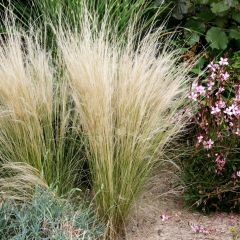
Stipa tenuifolia
- Flowering time August, September
- Height at maturity 45 cm
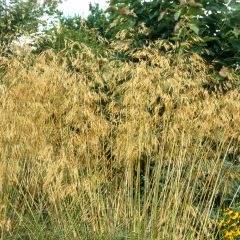
Stipa gigantea
- Flowering time June to August
- Height at maturity 2 m
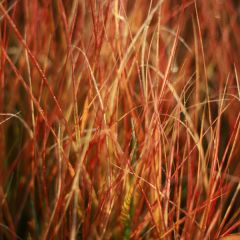
Stipa arundinacea
- Flowering time September to November
- Height at maturity 1 m
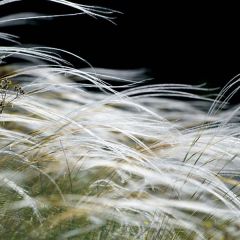
Stipa pennata
- Flowering time August to November
- Height at maturity 40 cm

Stipa capillata
- Flowering time August, September
- Height at maturity 60 cm
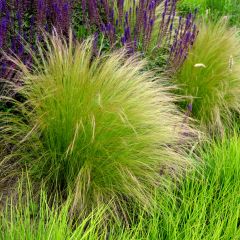
Stipa tenuissima Angel Hair
- Flowering time August, September
- Height at maturity 45 cm
Discover other Stipa
View all →Available in 0 sizes
Available in 2 sizes
Available in 3 sizes
Available in 3 sizes
Available in 2 sizes
Available in 2 sizes
Available in 2 sizes
Available in 1 sizes
Available in 1 sizes
Available in 1 sizes
Planting
Where to Plant Stipa
Most Stipa are highly resistant to cold (down to -15°C to -20°C in well-drained soil) and thrive throughout France.
Stipa requires light and will be vigorous in full sun, enjoying warmth, although it can tolerate light shade. It is not afraid of drought, heat, desiccating winds, or sea spray. It is perfectly suited to seaside gardens exposed to marine winds.
This is an undemanding plant, insensitive to harsh conditions that flourishes in poor, stony, sandy soils. It prefers dry, light, stony, even calcareous soils, which are well-drained and low in fertility. A very well-drained, cool soil will give certain species like Stipa gigantea a more lush appearance.
It only fears heavy, suffocating, and overly wet soils in winter.
Provide it with a nice, open spot bathed in sunlight: it will fill out in two seasons and tends to form large clumps that are ample and light. While waiting for it to reach its full development, fill in the gaps with annual plants.
It can enhance the back of a border by adding height and volume, structuring it, but can also serve as a groundcover for shorter species.
Essential in a dry or gravel garden, it fits into all settings from the wildest to the most graphic and modern, blending well into a contemporary style. Its decorative appearance for a good part of the year allows for a wide range of uses: as a solitary for large stipes or planted in masses or in scattered groups within large wild borders, lightening them, to edge a path, in dry rockeries, in a lush mixed border weaving between larger companions, and even in a large pot on the terrace to enjoy the extremely soft, tousled spikelets.

Planting stipes among pebbles and gravel
→ Discover our video ‘Grasses for Summer‘
When to Plant Stipas
Plant Stipa in spring from March to May in cold and damp regions, in autumn, from October to November to allow it to root well before the arrival of summer in hot and dry climates. In all cases, plant when frost is no longer a concern.
How to Plant Stipa
In the Ground
Stipa must be planted in well-draining soil that does not retain stagnant moisture in winter. Plant giant stipes alone for a spectacular effect or at a rate of one plant per m². For a linear planting, space the plants 40 cm apart. To structure a large wild area, prefer mass planting in groups of 3 to 7 plants per m².
Do not add compost or fertiliser at planting, but include a generous handful of gravel, especially in heavy or clay soils to promote drainage. If the ground is too wet or clayey, plant on a raised rocky mound and in pure sand.
- Dig a hole 2 to 3 times wider than the root ball diameter
- Loosen the extracted soil and add a handful of potting soil and river sand to lighten it
- Spread a drainage layer at the bottom of the hole
- Place the root ball in the centre of the hole, ensuring the collar is level with the soil surface
- Lightly firm the soil
- Water once a week the summer following planting
Growing a Stipa in a Pot
The substrate should be light. Group several plants together.
You can also sow stipa. Discover our tips in our tutorial How to Sow Stipa?
- In a large terracotta pot of at least 50 cm in diameter, spread a drainage layer (gravel, a mix of pebbles…)
- Plant in a mix of loamy soil, potting soil, and 20% coarse river sand
- Water at planting and then regularly
- Place in full sun
→ Learn more in our advice sheet: Growing Stipa in a Pot to Liven Up Your Terrace or Balcony.
Read also
Planting grassesWhen and how to sow Stipa seeds
Sowing takes place in spring, from February to May, using mature seeds harvested from the garden at the end of summer or with our Stipa seeds in packets. It can be quite tedious as a cold treatment is necessary to break their dormancy. Germination is slow.
- Sow in trays or pots in a very fine mix of compost and sand
- Cover the seeds with a little compost
- Place your sowings at a temperature of 15 to 18 °C for 2 weeks, then put them in the refrigerator for 3 to 6 weeks
- Keep the substrate moist until the young plants emerge
- When the young plants have 2 or 3 leaves, transplant them into individual pots of 7.5 cm in diameter
- Overwinter them in a frost-free environment and plant them in the ground in the following spring or autumn
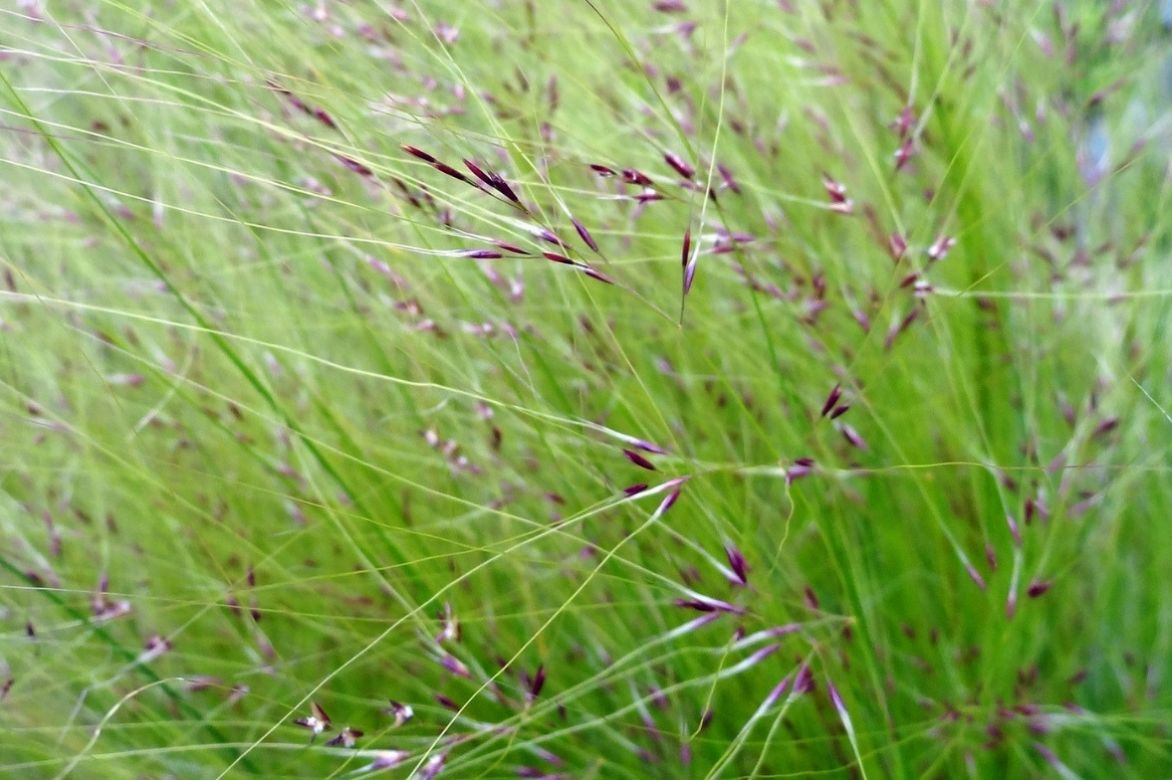
Close-up of the inflorescences of a Stipa tenuifolia that will produce the seeds later.
Maintenance and Pruning of Stipas
The Stipa is a robust plant, ideal for sustainable gardens, low in water requirements and maintenance-free! It withstands cold and drought perfectly, and once well established, requires no watering. However, remember to water potted Stipa, as they will need more water, especially during very hot and windy weather.
The foliage of Stipa, evergreen, does not flop but can be combed by hand (with gloves) or with a rake at the end of winter or early spring. This operation helps to remove dead leaves that weigh it down and stimulates the growth of new foliage. On this topic, discover Michaël’s tips: Grasses: those that are pruned, those that are combed)
Stipas are insensitive to diseases.
Multiplication
The division of clumps of Stipa in spring or late summer remains the simplest method. It is carried out when the clumps are well-developed, after 3 or 4 years of cultivation. Moreover, most stipes self-seed well.
- Using a fork, gently lift the clump
- Insert two spades back to back in the middle and lift one using leverage
- Divide into several pieces
- Replant the pieces immediately in pots under a cold frame to encourage growth
- Water generously
- Plant out in early autumn or the following spring
Also read our tutorial: How to divide a stipa to successfully propagate it?
Associating Stipas in the Garden
Centrepiece of gravel and wild gardens scorched by the sun or exposed to sea spray, the Stipa gracefully asserts itself in the lush scenes of a country border as well as in the more minimalist setting of a contemporary garden.

An example of pairing in a Mediterranean atmosphere: Stipa tenuifolia, Achilleas like Achillea filipendulina ‘Golden Plate’, Lavender and Olea Europea (The garden of Entëoulet – Gers © Renée Boy-Faget)
Its silky tufts with shimmering reflections and its decorative foliage for a good part of the year bring a quivering poetry, much softness, lightness, and movement, lightening all the flowerings. Its often fawn-coloured hues and its parchment-like plumes have the advantage of calming the fire in certain combinations.
To avoid the monotony of mass planting, pair it with subtle themes based on the contrast of shapes and tones.

An example of a natural and colourful pairing: Allium sphaerocephalon, Stipa arundinacea, Lavender, purple Sedum like the stunning variety ‘Purple Emperor’ and some Pennisetums (©Nathalie Pasquel – MAP)
The Stipa enjoys surrounding itself with plants as undemanding as it is, which love the sun and well-drained soils, such as Eryngium with its bristly inflorescences, wormwoods, and the spiky stems of rosemary.
It will punctuate the mineral scenes with its airy presence, surrounded by other grasses like Flexible canary grass, Pennisetum that will sway with the slightest breeze, or medium-sized phormium.
In large borders, it easily associates with many perennials with summer or autumn flowering such as Agastache, Allium sphaerocephalon. It will accompany floriferous and light perennials, such as Gauras, Buenos Aires Verbenas, linarias, sage, penstemons, Aster, scabious, or even Damascus nigella. It lightens the flowerings of heavier perennials like Oriental poppies or irises.
The Stipa adapts perfectly beside meadow flowers in natural-style gardens. The golden spikes of Stipa gigantea will contrast beautifully in shape with the large flat inflorescences of yellow achilleas or large daisies.
Planted in numbers, the Stipa and Pennisetum will form a backdrop for the vibrant summer flowerings of Echinacea, Daylilies, Heleniums, or Kniphofia, providing contrast or recreating harmony between overly strong hues. In a mixed border full of fire, they will soften the somewhat strict habit of these tall beauties.

An example of a light pairing: Stipa tenuifolia, Sisyrinchium striatum, Carex comans ‘Bronze Form’ (The garden of Sophie Mestdag – photo Virginie Douce).
In the foreground of a flowerbed, surround the Stipa with plants like small stonecrops, dwarf chrysanthemums, and sedum.
The silky tufts of the stipes will be well highlighted by the dark foliage of a smokebush, Taxus baccata, or Physocarpus.
Useful resources
- Which varieties of grasses to choose, how to prune, plant, and combine them? Discover all our tips on our blog!
- Create a sun-loving naturalist garden with the Stipa from our collection!
- Which plants to pair with our Stipa in a dry garden?
- Stipa: which variety to choose for your garden?
- How to comb and care for Stipa: the complete guide
- Discover our ideas for pairing Stipa
- Explore more comfort plants in our advice sheet
- Discover 7 grasses for a south-facing garden
- Learn about the indestructible grasses
- Subscribe!
- Contents
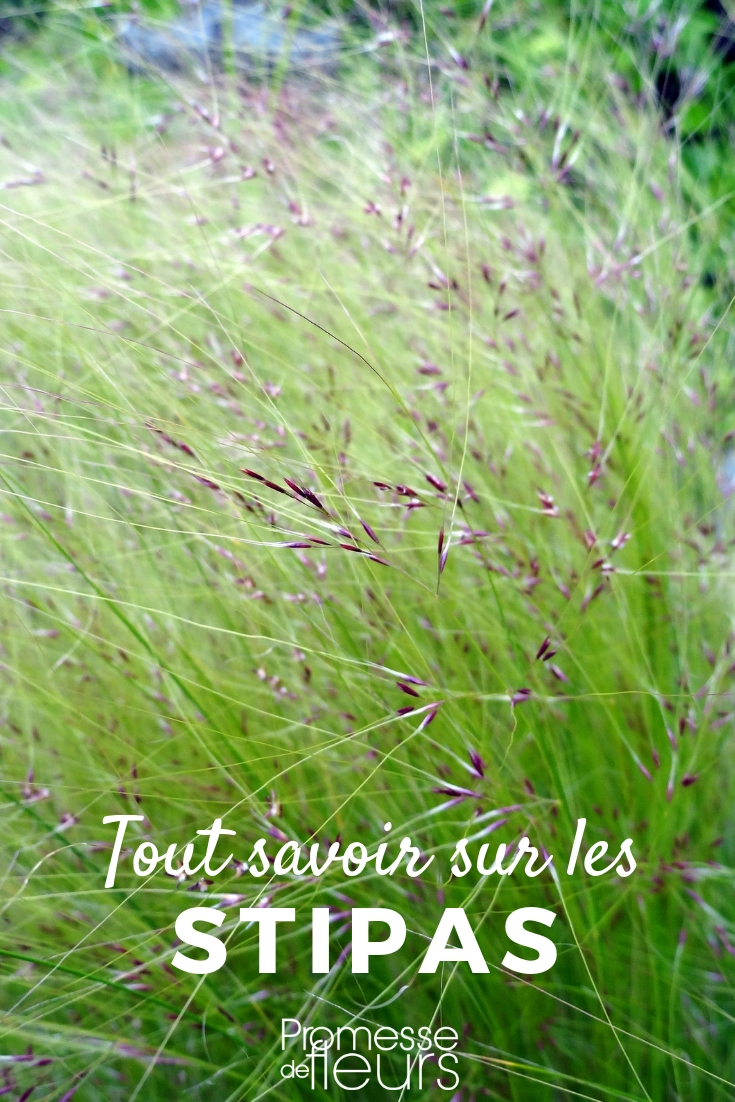































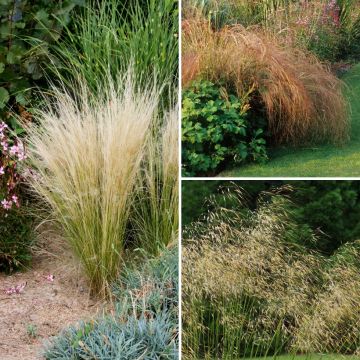

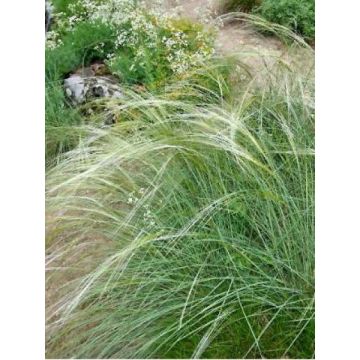


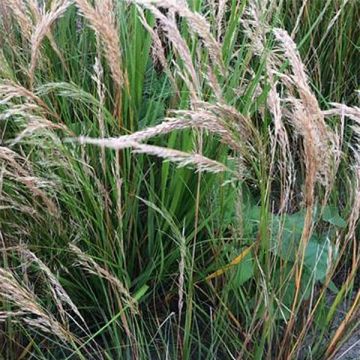
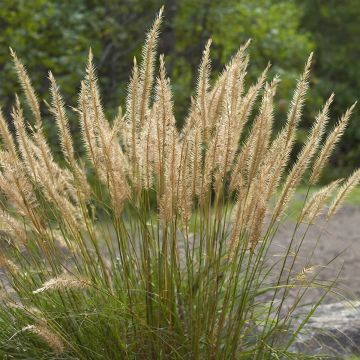
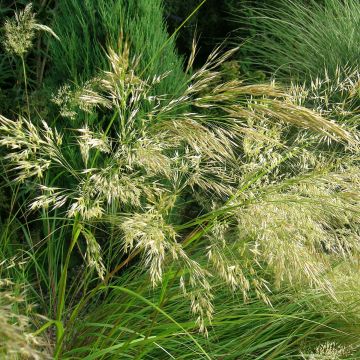
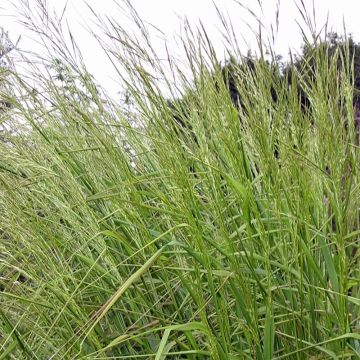
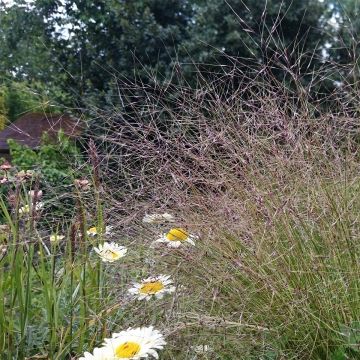
Comments